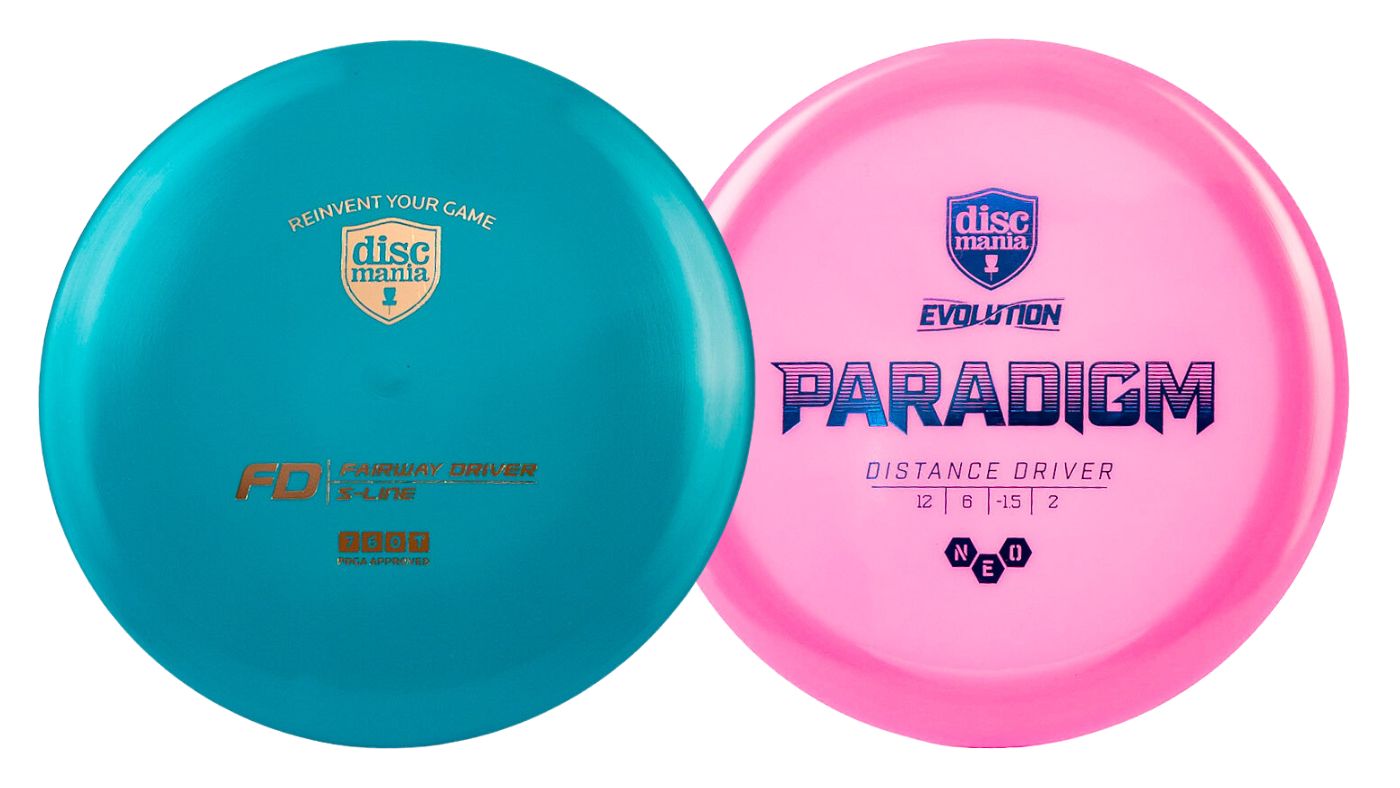Delving into the world of disc golf can initially feel like navigating an intricate maze.
Grasping the nuances of various disc types, their plastics and brands, the peculiar flight numbers, throwing techniques, and a labyrinth of terminology might seem quite daunting. But fear not; we’re here to guide you through the captivating journey of disc golf mastery. Today, we focus our lens on understanding two unique disc types: the distance driver and the fairway driver.
Why these two, you ask? Well, because of the essential differences they harbor, and the crucial role they play in enhancing your game. Although at first glance, distance drivers and fairway drivers might appear strikingly similar, delving deeper reveals their stark differences. This comprehensive guide will elucidate why understanding these differences is crucial to mastering disc golf.
Ready to up your disc golf game? Let’s dive in!
Demystifying Disc Golf: What Separates Distance Drivers from Fairway Drivers?
Undeniably, both distance drivers and fairway drivers fall under the category of disc golf drivers. However, they vastly differ in aspects such as their size, speed rating, distance capabilities, and accuracy. While these differences may seem minor, they are critical to shaping your strategy on the disc golf course.
Let’s break down these distinguishing characteristics:
- Size: Distance drivers are engineered for aerodynamics, resulting in a thin, sharp, and sleek design, while fairway drivers are slightly thicker.
- Speed: Distance drivers demand a higher speed rating, necessitating a harder throw than fairway drivers, which boast a slower speed rating.
- Distance: Distance drivers, as their name suggests, are tailored for maximum distance, while fairway drivers are designed for shorter drives and offer a more significant range than mid-range discs.
- Accuracy: Distance drivers may offer less accuracy due to the immense force required to throw them. In contrast, fairway drivers, with their easier control, provide better accuracy.
The Devil’s in the Details: Unraveling the Differences
Disc Size
- Distance Drivers: These are usually sleeker and thinner than fairway drivers. The ongoing quest for speed and distance has led to an evolution in their design, becoming more razor-thin and aerodynamic.
- Fairway Drivers: Though fairway drivers have also become thinner over time, they still retain a slightly thicker design compared to distance drivers. Discerning between the two can sometimes be tricky, often requiring a closer inspection of the disc’s details.
Disc Speed
- Distance Drivers: These discs usually boast a speed rating between 11-15. The higher the rating, the more speed is needed for the disc to fly correctly. Contrary to popular misconception, the speed rating doesn’t determine the disc’s speed but the throwing force required from the golfer for optimum performance.
- Fairway Drivers: With speed ratings ranging from 6-10, fairway drivers demand less force to fly, making them easier to throw. However, the lesser speed translates into lesser distance compared to distance drivers.
Distance Potential
- Distance Drivers: These discs provide maximum distance. If thrown with sufficient speed, they can potentially cover distances of 400+ feet. The distance potential of these drivers is essentially only limited by your arm strength.
- Fairway Drivers: While they don’t match up to distance drivers in terms of distance, fairway drivers excel in control and accuracy, making them perfect for beginners.
Accuracy
- Distance Drivers: With their focus on distance, these drivers tend to compromise on accuracy. However, as your skill and arm strength develop, your accuracy with these challenging discs can significantly improve.
- Fairway Drivers: As the name suggests, fairway drivers provide superior control and accuracy, although at the cost of lesser distance. Just as with distance drivers, consistent practice can also enhance your distance potential with fairway drivers.
Why Understanding the Differences Between Drivers is Crucial
- For Beginners: For those new to the sport, understanding the differences between a distance driver and a fairway driver is crucial. Distance drivers can be quite challenging for beginners and should be avoided initially. Start with understable fairway drivers, and as your skill improves, gradually transition to distance drivers.
- Versatility on the Field: As your skill level progresses, you’ll discover that different drivers are better suited for different situations. Having a good grasp of the differences between drivers can greatly enhance your versatility on the field.
- To Become a Disc Golf Pro: A comprehensive understanding of the differences between distance drivers and fairway drivers is an integral part of your technical disc golf knowledge. To become a truly great disc golfer, you need to couple your practical skills with technical expertise.
Remember, mastering disc golf requires commitment and consistent practice. But with the right knowledge and perseverance, you’ll be acing the disc golf course in no time.


